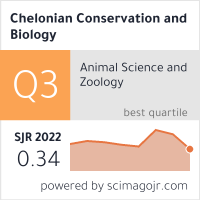CROSS-SPECIES DEEP LEARNING FOR AUTOMATIC IDENTIFICATION AND BEHAVIOUR ANALYSIS OF ENDANGERED HAWKSBILL SEA TURTLES USING FACIAL SIDE SIMILARITY
Abstract
Onboard accelerometer allows for remote monitoring of animal movement and posture, enabling researchers to infer behaviours. Data scarcity is still a problem in ecology, even with deep learning's automated analytical capabilities. To categorise behaviours using acceleration data of critically endangered hawksbill sea turtles (Eretmochelys imbricata), we investigated transfer learning. In order to tackle a similar problem, transfer learning leverages a model that was trained on one task from a big dataset. We used this technique to detect hawksbill behaviours including swimming, resting, and eating by adapting a model trained on green turtles (Chelonia mydas). Additionally, we contrasted this with a model that was developed using data on human activities. According to the findings, transfer learning from the human and emerald turtle databases improved the F1-score by 4% and 8%, respectively. Through the application of knowledge transfer, researchers may use deep understanding to increase the usage of acceleration sensors for wildlife observation by tailoring current models for the sample animals.
Downloads
Published
How to Cite
Issue
Section
License
Copyright (c) 2025 Chelonian Research Foundation

This work is licensed under a Creative Commons Attribution 4.0 International License.






